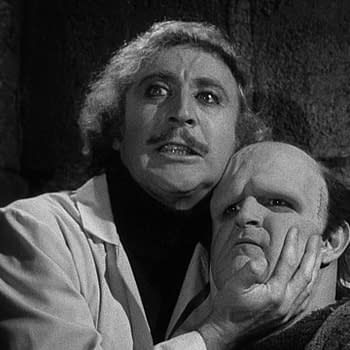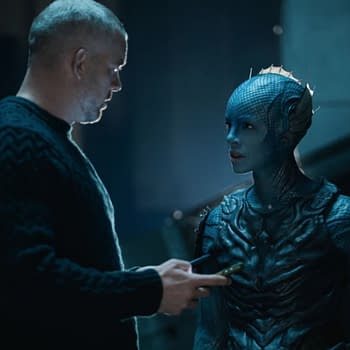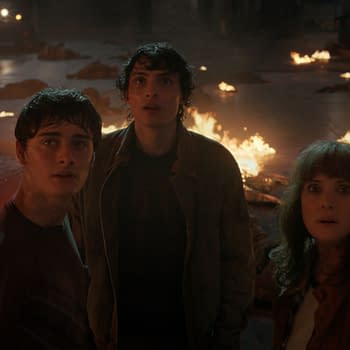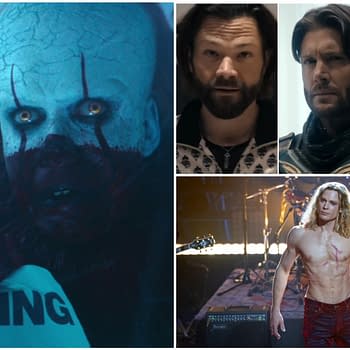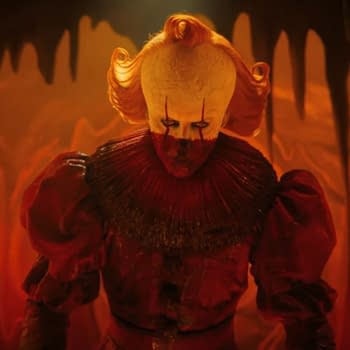Posted in: Amazon Studios, TV | Tagged: A League of Their Own, Abbi Jacobson, amazon prime video, exclusive, interview, Production Design, Victoria Paul
A League of Their Own Production Designer Talks Baseball Challenges
When A League of Their Own premiered on Amazon, it provided an opportunity to tell a more layered story concerning the Rockford Peaches of the All-American Girls Professional Baseball League (AAGPBL) and beyond. It was a challenge Victoria Paul (NCIS: New Orleans, Lie to Me) was excited to take on. The production designer spoke to Bleeding Cool about bringing the story to life on TV, distinguishing it from the 1992 Penny Marshall film, baseball sequences, and more.
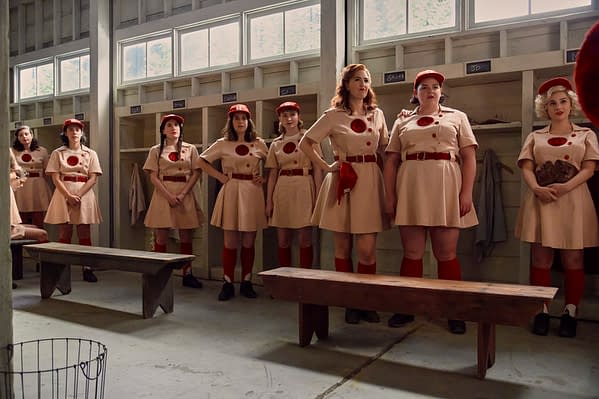
Expanding A League of Their Own
Bleeding Cool: What intrigued you about 'A League of Their Own?'
Paul: The challenge of doing a period project. More than that, the notion of telling the story of a '40s baseball team in a way we could talk about, which probably was not possible when the original movie was made. Now, we could talk about it through the lens of women being gay, black players not getting their shot, and what women contributed during the war, not just recreationally making a baseball league but going to work in factories. We could talk about the way these women were still oppressed after all that. It was interesting and reflective of our times, a refraction of that story.
Did you start from personal research, or did the foundation start from the Marshall film?
I saw the film when it came out, but we didn't rewatch it. We worked from this amazing research archive that Will Graham, Hailey [Weirengo], and Abbi [Jacobson] put together. They've worked on this for a couple of years with a couple of researchers while having deep connections in the historic baseball community. They had binders of information about Rockford, the league, and individual players. The history of Rockford and when black people first settled in Illinois touches a little bit on the Great Migration. It was such a deep dive… intense… that was mostly written text. Based on that, we started our visual archives with visual research, and we built up our archive. I have to say what they handed to us, the information they'd done in their COVID downtime, was this amazing gift.
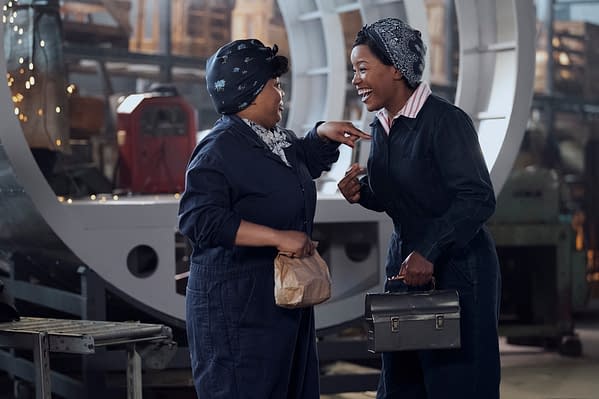
Was there any particular setting that was so more difficult than others in the series?
The major challenge, or "the elephant in the room," was the baseball stadium. We were shooting in Pittsburgh and there were a couple of stadiums of the era, one in Quakertown outside of Philadelphia over 5 hours away and another in Erie, about the same five hours. Not a stadium we could go to tomorrow and shoot. They were both far enough away that they just presented a host of logistic challenges like, "What do we do? Because don't forget, it's a series." Every director had baseball, and it's like, "Do we go for four days every 12?" It was a logistical challenge to figure out how to make that work.
Also, scheduling-wise, we didn't know which four or five days we were going to need three months from now. There was no way for us to book these stadiums; we were shooting baseball when everybody else was playing baseball. These stadiums are still used by little leagues along with parks-and-rec leagues. They're not Major League, but they're used seriously used throughout the summer, and it proved a logistical nightmare. The other thing we soon learned was it rains a lot in Pittsburgh, Erie, and Philadelphia in the summer. We could play in the light rain. We could keep going, but when it would downpour, the fields would flood.
Not only could we not shoot that day, but we often couldn't shoot for one or two days after to let the field dry out. Adding the unpredictability of weather and the havoc that it wreaked on us, we concluded that we need to own this state and we need to be the boss of the schedule. We can't let an outside enterprise dictate to us where we can shoot. So that led us to build it. The next thing was the hunt for the piece of land. We looked at a lot of stuff. We honestly wanted a more urban vibe than we wound up with, but we didn't find any parcel big enough beyond the stadium; we could see houses when it could feel like it was more embedded in the community. The piece of land we wound up with was pretty fabulous. It had the ball field on it, and it was regulation-sized, 90 feet base-to-base. It was a good size, and it was 380-385 feet to the outfield wall, a legit size. It had enough room for me to be able to build this stadium. I had to build a road in and pave the road, and then we had to do all the structural stuff and all the things you have to do when you're building something that's not scenery.
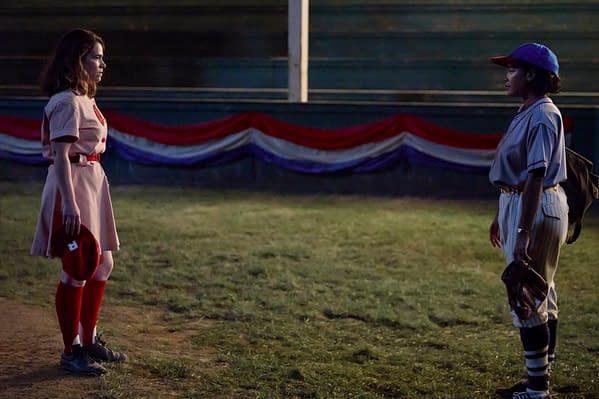
What went into the process of differentiating each stadium you filmed?
At first, we had ambitions to go to many fields, but because we used our field so often, a home field for each director, lose a couple of days to rain, and then at the end of the episode, we had to pick up the next director. We never had enough time to flip our stadium. The backside of this green stadium is painted a russet red because we were going to do this thing, and there was never the time. We found an older, concrete stadium not far from our area, and we did a redo on that. We had fences and signs, and we brought them into our period. That was the stadium where they played the night game, and the lights got in their eyes in Lakeshore, which was the only other stadium we went to in the series.
We had one that didn't have the physical complications because we built it on stage. I didn't have to drill footings and geologic testing. The other set that had as much design thought put into it was the Peaches' house because, like the stadium, it was a major player throughout. There were going to be pages in it with every director and every episode we're going to be in that house. The challenge there is to make a place where different directors have many opportunities.
The first step whenever you're designing something like that is to find the exterior. In and around Pittsburgh, there are so many early 20th century 1901 Victorian exteriors. We fell in love with a Victorian house with shingles on a yellow brick street, which sounds like, "You made that up!" But yes, it was a "yellow brick road." We were like, "Oh my God! That's the house, right?" We love that house. It's one of those tricks, and we knew we weren't going to shoot inside, but we walked in to survey it, and it was tiny. I was like, "Oh my God! We can't," so we expanded it. We kept the vibe across the front. We built a matching front porch on one stage so that we could have ins and outs either at the location or the house so we could sell it all together seamlessly.
We knew what we wanted was a house that flowed, and we could go upstairs, downstairs, through the rooms, and have characters' conversations all over. With that in mind, I started designing it, we built the downstairs, an entire staircase with a roof, all the hallways around it, and all the bedroom doors on one stage. On another stage, since we had exceedingly tight stage space. On another, I did about half the stairs, so I was up on a platform, maybe six feet, and the actual bedrooms. We sewed it together that way, but that house was great. It was a joy to design. It took a long time because we were smack in the middle. All of these sets did of the whole supply chain-kind of a horror.
We found ourselves ordering balusters for the beautiful staircase and, two months later, going, "Where're our balusters?" Next thing you know, we're just going to Home Depot. Everything in that house was built. We came to realize that it was like this worldwide supply chain thing, and we just couldn't rely on anything. My stadium was four weeks delayed for structural steel out of China. It was crazy, but I'm happy about the flow in that house. I was super happy about how at the end of the day, both the house and the stadium were layered, aged, and nothing filled. It felt like that house had been used by people long before our girls moved in.
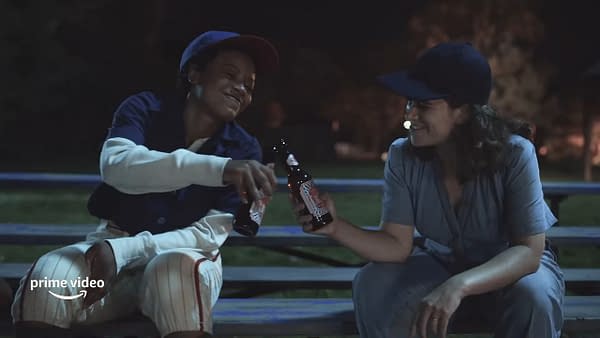
How does it feel doing a period piece compared to your more contemporary projects?
When you do a contemporary show, everybody comes on and looks at the living room through their rooms, like, "I'd never had a couch as you do." We all have a living room and couch, but when you do a period show, it's by dint of the removal in time, there's a little bit of magic, fairy dust, and people go on the set, and they're like, "Oh my God! This is amazing!" You know, there's that. My personal biggest moment was we had a couple of the original Peaches come and visit, which was amazing. Their stories were wonderful, and these ladies were sharp as ever. It was truly wonderful. They sat in the telephone room because the house had one telephone, and they were like, "Oh my God! This feels like my house growing up," and "This takes me back this way." They were enveloped in a memory. There were only a couple of people around the day came me, my fabulous, wonderful decorator, Diana Stoughton, who was responsible for so much of it. We sat with them and felt so validated by those women.
Did they go to the stadium?
They went to the stadium. Our stadium was honestly a departure from the actual Rockford, Illinois stadium of the day. That stadium was a concrete stadium, and it's hard for us to realize, in 2022, unless you're a sad Dodger fan like I am, how important baseball was, right? People didn't sit home and Livestream the crowd. They went to the ball game on Wednesday or Thursday nights, which was cheap and affordable. So the stadiums were much bigger. The one in Rockford wasn't a Major League stadium and didn't have a major league team, but it was much bigger. [In] The stadium we built, we wanted to hold to about right around 700 seats because of extras' issues and needing that fine dividing line between having real extras over here in a shot and having to build out the whole stadium with CG and filling it. We talked about the size of our stadium a lot, and most of it had to do with straddling that line between a medium-wide over at right field [and] first base. We can fill it right with real people and figure out how many, not limiting our CG but being as practical as possible. The [original Peaches] recognized our stadium and were like, "Oh yeah, there were tons of stadiums like this then," but our stadium was smaller than the one they played.
Was there any talk about maybe doing another season, or are you waiting to hear from Amazon?
That's what there is, talk, and I know the show has a rabid fan base, right? The audience set out to reach is super hardcore. I never know about stuff like this. I did a show 'NCIS: New Orleans.' I said to my husband and kids, "Don't come. We'll do the first 13 and get canceled. I'll be home by Christmas, and eight years later…" I now deem myself a bad judge of that kind of thing. In terms of a lot of the stuff out there, our show [compared to 'Lord of the Rings: The] Rings of Power' is cheap to some stuff. Who knows? We'd all love to.
Amazon's A League of Their Own is available to stream on Prime Video.











